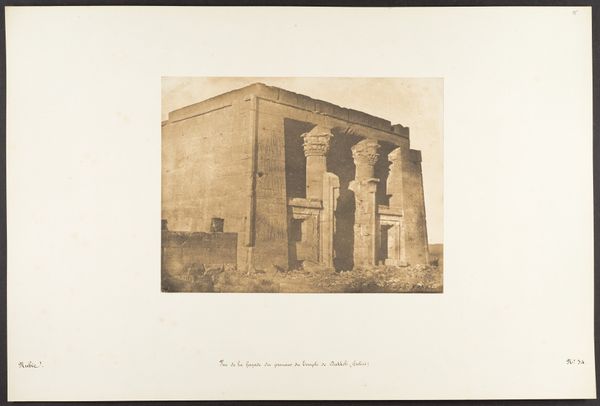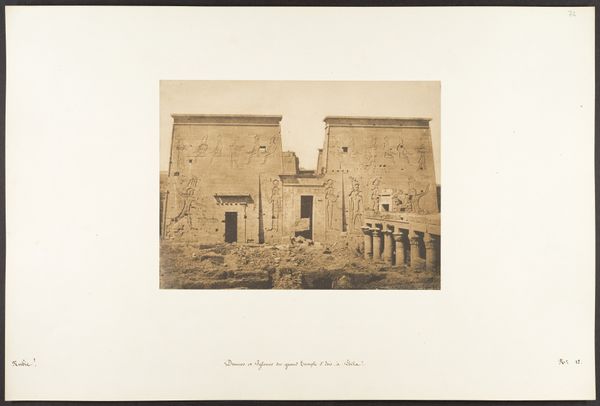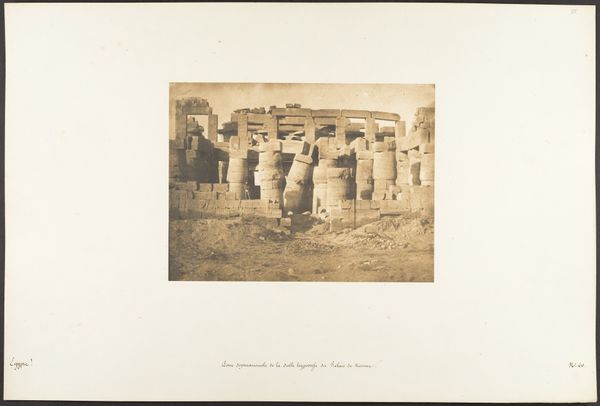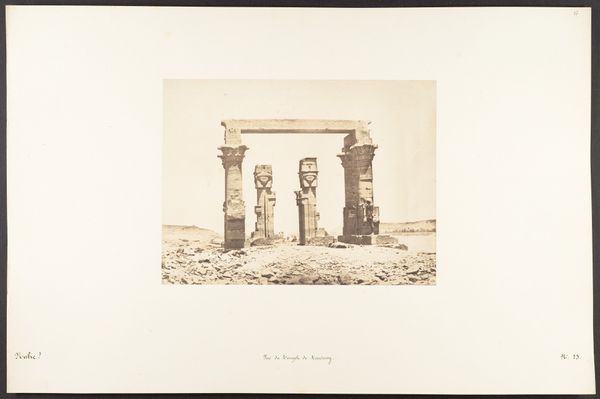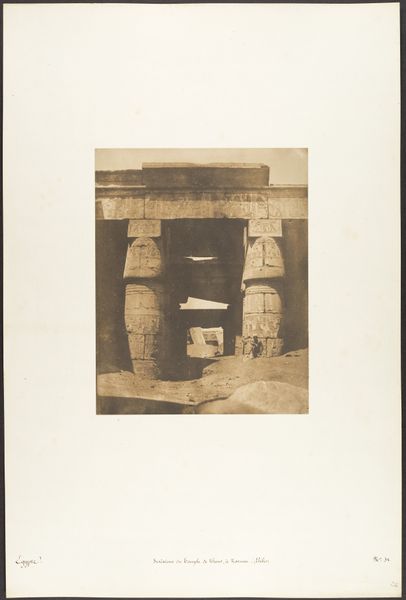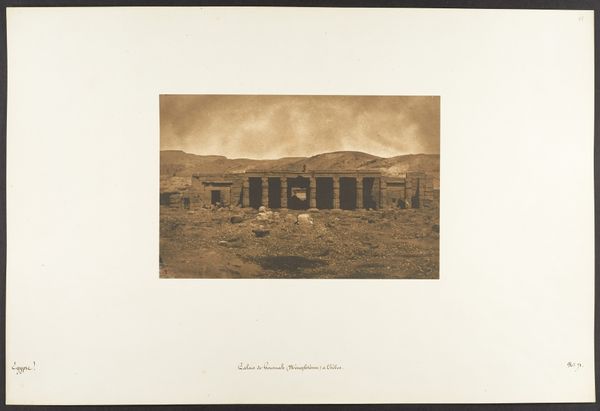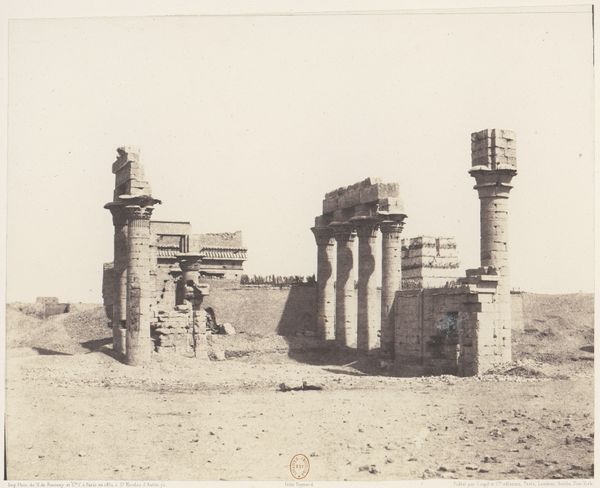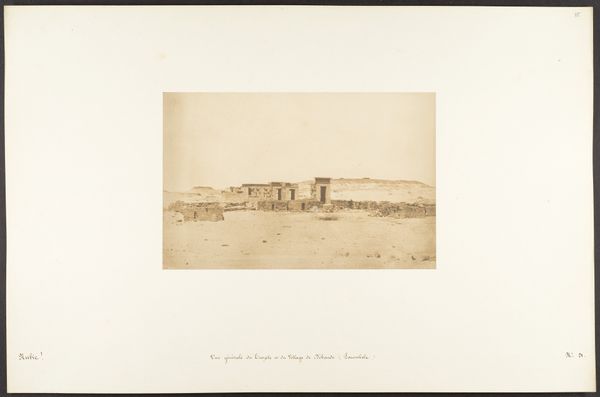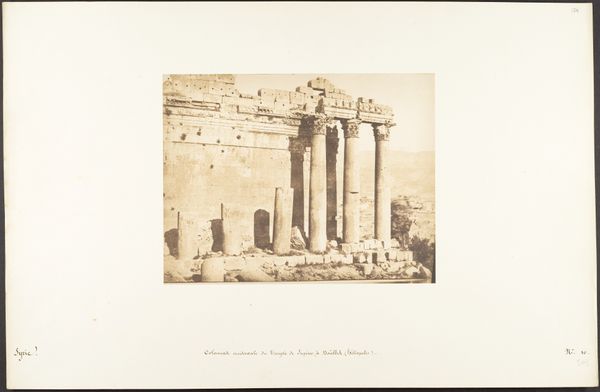
print, photography, architecture
# print
#
landscape
#
ancient-egyptian-art
#
photography
#
architecture
Dimensions: Image: 6 15/16 × 8 9/16 in. (17.7 × 21.7 cm) Mount: 12 5/16 × 18 11/16 in. (31.2 × 47.5 cm)
Copyright: Public Domain
Editor: This is Maxime Du Camp’s "Vue du Temple de Tafah," taken in 1850. It's a photograph showcasing ancient Egyptian architecture, and the starkness of the landscape really strikes me. What compositional elements stand out to you the most in this piece? Curator: The bilateral symmetry of the temple façade is undeniable. Observe how Du Camp's positioning creates a strong central axis, anchoring the ruin in the visual field. Note the strategic use of light and shadow that sculpt the architectural forms and bring attention to the rough surfaces. How does the texture contribute to the mood? Editor: The texture makes it feel incredibly old and worn down; I feel like I'm there in the desert, exposed to the elements. Does the stark contrast influence your interpretation at all? Curator: The limited tonal range, almost monochromatic, draws attention to the geometric shapes inherent in the architecture. This reduction to form emphasizes the basic structural components, reflecting a focus on the temple’s abstract essence beyond its literal representation. Consider the placement of the lone palm. Editor: It kind of breaks up the geometry a little bit? And I guess gives it scale and context. Curator: Precisely. It punctuates the scene, contrasting the rigidity of the man-made structure with nature’s organic form. This play is pivotal; notice also its position within the photographic frame—does it align with any pre-established lines of force? Editor: I see! The lines draw your eye to it. I hadn't noticed how carefully everything was arranged! Curator: It illustrates how a photographic print of an Egyptian ruin could function as more than just a topographical document; rather, a semiotic exercise on civilization itself. Editor: I hadn't thought of it that way at all. It's fascinating how just focusing on the form can completely change my understanding of the piece! Curator: Agreed. There's a richness to be discovered in simplicity.
Comments
No comments
Be the first to comment and join the conversation on the ultimate creative platform.
